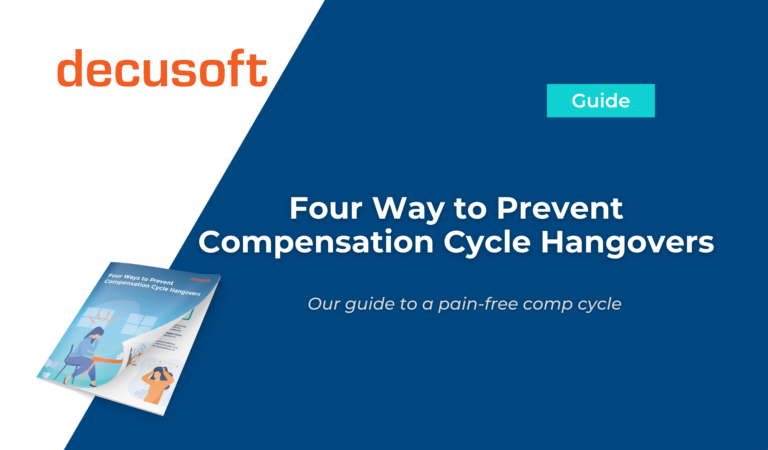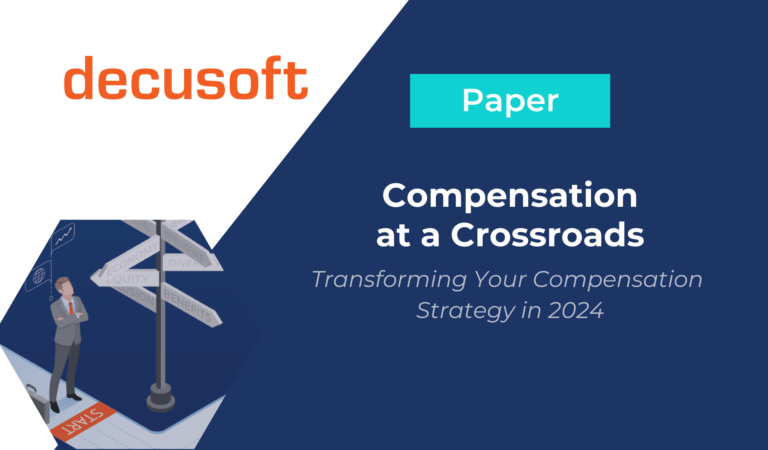Organizational Agility: Today’s Universal Operating Context
It can be argued that the Covid era, and the new levels of business uncertainty it brought us, forced nearly all enterprises to shine a brighter light on the mission – if not business imperative – of elevating organizational agility. For context, I define organizational agility as the ability to be out in front of both business risks and business opportunities, usually with optimal workforce-related actions and decisions. Organizational agility frameworks typically include elements such as anticipating the need to pivot, knowing the most viable options for pivoting, choosing the best option from among them, and then moving quickly. Moreover, a common blueprint for elevating organizational agility often involves picking-up on all relevant signals and cues, then leveraging technology to be able to execute swiftly and reliably. The payoff for demonstrating organizational agility cannot be overstated. Truly agile firms are more than twice as likely as the average organization to achieve top-quartile financial performance (55% vs. 25%) according to Accenture; and agile firms grow revenue 37% faster than their non-agile counterparts as reported by the Massachusetts Institute of Technology.
HR Technology in the Org Agility Toolbox
As a former HR technology leader reporting to CHRO’s in global financial services firms, one important (and fortunately, actionable) realization became foundational for my teams and the HR organization overall. It was that HR technology tools and systems could play a huge role when trying to elevate organizational agility. That said, a necessary caveat or key dependency for this to occur was that the HR / HCM process or results area deemed highly critical for pivoting the organization, like when business strategies or priorities change, needed to be supported by best fit, built-for purpose technology. A simple example is the situation where a leadership team determines that having the very best Salesforce application experts in the market (both business analysts and developers) is essential to becoming a world-class sales organization. This has obvious implications in terms of compensation policies, structures, budgets and planning aspects, starting with workforce planning, and recruiting processes, and then ensuring top talent was engaged, productive and retained. In this scenario, compensation management, and the most effective enabling technologies for optimizing compensation-related outcomes, both take center stage.
This type of org agility use case also highlights a largely uncontested notion about the nature of the HR software marketplace over the last few decades, that there are different categories of enterprise technology solutions, and all seem to have a certain operating context in which they are most relevant and impactful. Enterprise software categories designed for the HR domain and its processes range from point solutions (aka “best-of-breeds”) to multi-process talent management suites, to the largest enterprise platforms also designed for cross-functional data management, workflow automation, rigorous security requirements and inter-operability. A related point that logically follows is that in any situation where one area of HR/HCM (such as compensation management for example) is on the critical path to something as important as the ability to pursue a new, very strategic business priority, seeking out technology solutions specifically designed for the challenges and needs of that HR/HCM area (e.g., a specialized or point solution) makes eminent sense.
Now add to the mix the fact that, by definition, these point solution software providers basically have only one process area they prioritize in every new release to the market, and in our example above, that would be compensation management. This R&D priority is therefore not shared across recruiting, learning, payroll, contractor procurement, hourly worker scheduling and administration or any other HCM area, as would be the case with the other two HR software categories – talent management suites and large-scale enterprise automation platforms.
Moreover, customers deploying those type of multi-HR process solutions tend to have a very diverse and potentially large set of business process pain points and corresponding feature/functionality requests they hope to see addressed in upcoming releases from their vendor partner. That said, there’s usually not enough elasticity in that vendor’s annual R&D budget to make more than a few HR process areas a priority that year, or even over a span of a few years. I assert this purely from personal experience where best-of-breed technology was the clear strategy my organization embraced. Frankly, in many of these instances, inadequate functional depth and not enough specialization of focus and functionality in the alternative vendor’s product roadmap was viewed as holding our organization back.
Planning and Org Agility Go Hand in Hand
Without question, once a need to pivot strategically or operationally is set in motion, the next step is to plan, and do so in earnest. In fact, since a policy or strategy decision is typically more supported by analytics than enterprise software tools, and since the execution of a direction or decision tends to be more supported with straightforward program and people management processes and tools, the planning aspects of enterprise technology is likely where key org agility objectives get realized – or not. And when compensation management is the focus of technology enablement, we cannot lose sight of the fact that the robustness and alignment of system planning functionality must be evaluated like no other part of the tool.
In our org agility example related to hiring top Salesforce talent, planning, modeling and analysis needs to occur relative to assessing the impact of updating compensation ranges and pay practices (e.g., pay above or “at” market) by region, as well as the plan and individual package level; and this must be followed by pay equity and other regulatory audits. Calculations can get fairly complicated in such an exercise, and anomalies like compensation guarantees, sign-on bonuses and the matching of comp offers from competitors must remain well-managed exceptions vs. the rule. This can be quite chaotic and inefficient without a supremely flexible and situation-tailored solution. Performance targets driving total rewards must also be appropriately linked to the criticality, difficulty, and market value of each role, and whether they are team-based to some extent. Also, performance periods must be based on valid and fairly applied business considerations.
Call to Action
Enterprises of all sizes across all industries recognize the business imperative of elevating organizational agility. Many entities also understand that when the critical path to achieving this outcome involves depth and range of specific systems functionality – such as what is needed in a particular HCM process and analysis area (e.g., compensation management or total rewards), evaluations should include the degree to which currently deployed HR technology enables or perhaps impedes organizational agility for some period of time. Additionally, the desire for very well designed and robust planning capabilities, easily navigated by end users with minimal or no IT support, is vital in relation to moments that matter for the organization like a push toward greater org agility. This might simply be in the context of adjusting priorities and plans, and often it is the planning, modeling and analysis requirements of compensation management that become more prominent.
And regarding classes or categories of HCM software, when depth and range of functionality in a particular area and the continuous focus and commitment of a software vendor to that part of the HR technology ecosystem are deemed essential for business growth, etc., the best of breed or point solution category almost always rises to the top. This is especially true when other HR process areas are in a more stable or steady state, and relevant stakeholders are reasonably satisfied with their systems capabilities, support and business outcomes achieved.
In short, when the broader business mission involves elevating organizational agility as a business imperative, businesses would be well advised to steer their HR/HCM technology selection process to the area of HR deemed most critical, and this is often about ensuring employees are effectively and equitably incentivized and rewarded. Moreover, when assessing the various compensation solutions in the market, the degree to which planning capabilities are a product focus and source of differentiation truly matters.
Toward this end, and in closing, I will mention a particular compensation software vendor that I had my first exposure to in an analyst briefing a few years back. I noticed then and continue to see evidence today of this vendor’s comp planning capabilities being both impressive and innovative. Because of this, the particular product company – called Decusoft – is worthy of serious review in any compensation technology evaluation process in my view. Of course, these exercises must also include whether the idiosyncratic process-specific needs of the customer are well understood. When tech requirements are not standard or typical, it is all the more reason to partner with a vendor that specializes in the area of greatest importance at that time.
The Author
Steve Goldberg’s 30+ year career on all sides of HR process & technology includes HR exec roles on 3 continents, serving as HCM product strategy leader and spokesperson at PeopleSoft, and co-founding boutique Recruiting Tech and Change Management firms. Steve’s uniquely diverse perspectives have been leveraged by both HCM solution vendors and corporate HR teams, and in practice leader roles at Bersin and Ventana Research. He holds an MBA in HR, is widely published and is a feature speaker around the globe. He’s been recognized as a Top 100 HRTech Influencer. Steve can be reached at SGoldberg@HRTechAdvisorySvcs.com.



